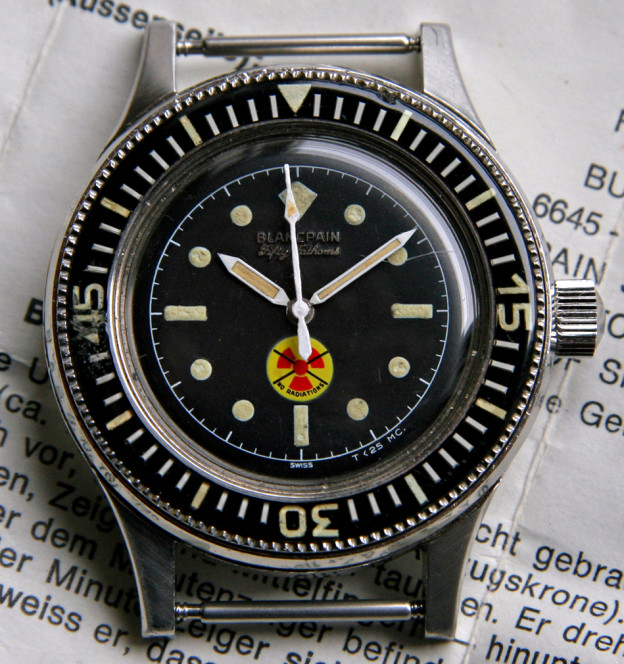First off, let me say I don’t claim to be an expert on the vintage Blancpain Fifty Fathoms “No Radiations” Bundeswehr-issued diver. Everything I’ve learned is from other, more knowledgeable collectors sharing their considerable expertise about this model with me. That said, I have owned two of them so I thought it would be useful to at least present what I do know about the watch, as well as what are hopefully some helpful pictures.
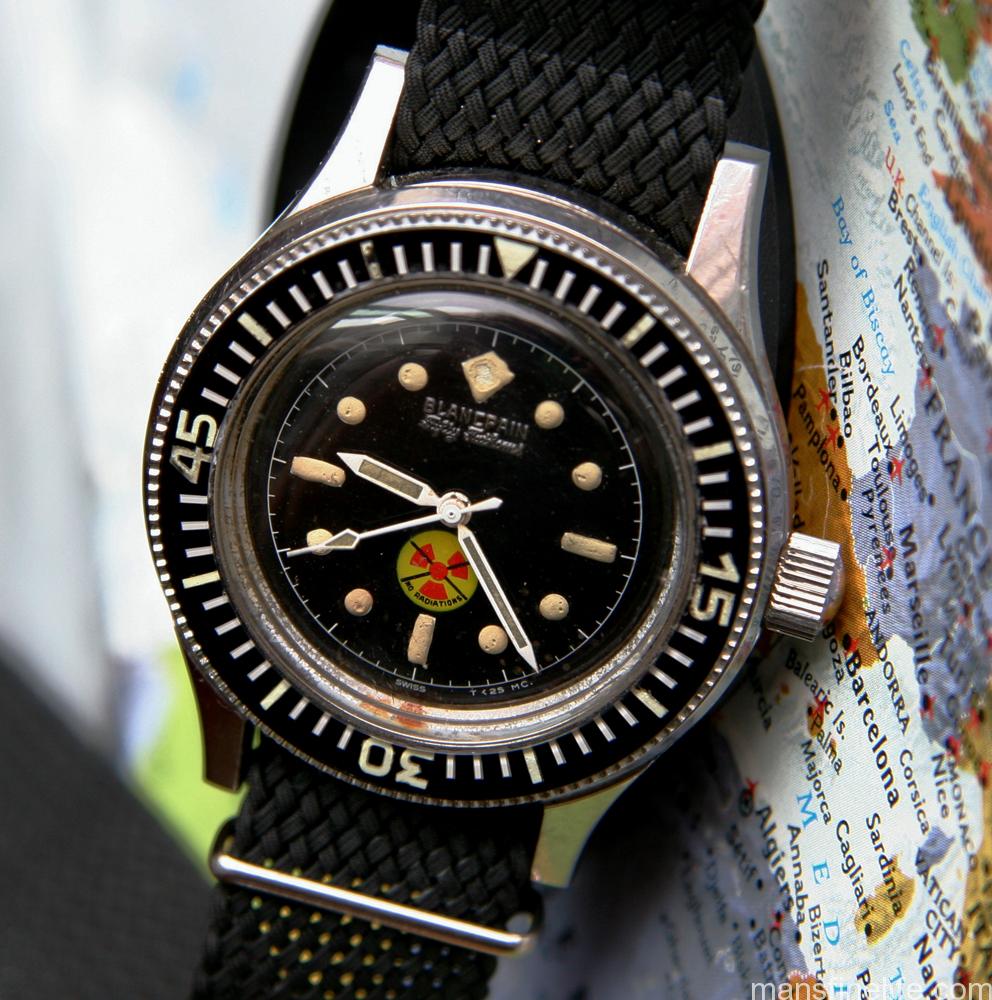
The issued Blancpain Fifty Fathoms “No Radiations” dive watches were requisitioned by the German Bundeswehr (Armed Forces) for their elite naval commando unit, the Kampfschwimmer, from around the mid-1960s until the early 1970s, when they were replaced with another model of BPFF (the big cushion shaped one with the crown at “4”, a red 3H on the dial to denote Tritium and the co-called “sterile” bezel with luminous triangle only and no numerals or hash marks). It’s no surprise that the German Navy chose Blaincpain divers for their elite frogmen forces. From its earliest conception the Fifty Fathoms was meant to be a serious purpose built diver, as proven by its legendary connection to the great Jacques Cousteau nearly from the start. The design was so good that the “No Radiations” version from the 1960s can directly trace its lineage to the models made for for the US Navy in the 1950s, the legendary MilSpec 1 and the even more uncommon Tornek-Rayville. (While the TR 900 is technically not considered a Blancpain Fifty Fathoms, the MilSpec & TR 900 are almost identical and certainly Allen Tornek was re-badging Rayvilles as Blancpains all along — so what is the difference between a Rayville that doesn’t have “Blancpain” on the dial and one that does really — aside from rarity, that is?).
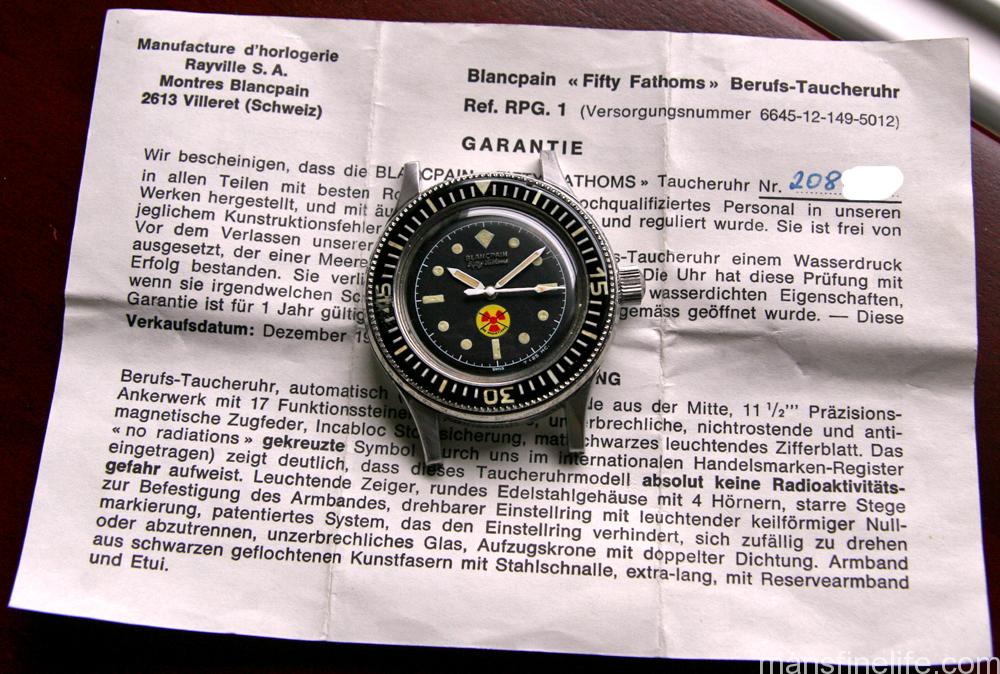
The idiosyncratic red & yellow crossed-out trefoil badge with a tiny “No Radiations” printed within took the place of the earlier models’ moisture indicator disc above the “6” marker and made a virtue out of the new regulations regarding radioactivity on wristwatches, the famous “T<25” standard. No doubt the previous 1950s versions of Fifty Fathoms utilized highly radioactive Radium for their super luminous dials and bezels, like so many other watchmakers at the dawn of the Toolwatch era, as well as a rumored incorporation of the even deadlier Promethium. And so the “No Radiations” badge was a very overt way for Blancpain to indicate that they had broken from the use of highly radioactive lume and were now firmly on board with the “Less than 25 milicuries of Tritium maximum” mandate codified in the early 1960s. This had the added benefit of making the watch suitable for military duty, as the T<25 standards were also strictly enforced in the martial world, with older Radium-lumed watches regularly being scrubbed at service, re-lumed with Tritium and then returned to duty. And just to be certain that they were getting the message across, Blancpain still printed “T < 25 MC” at a cocky angle below the “5” marker, one of the few companies aside from Rolex to use such a clear literal notation of the radioactive content of their dial & hands.
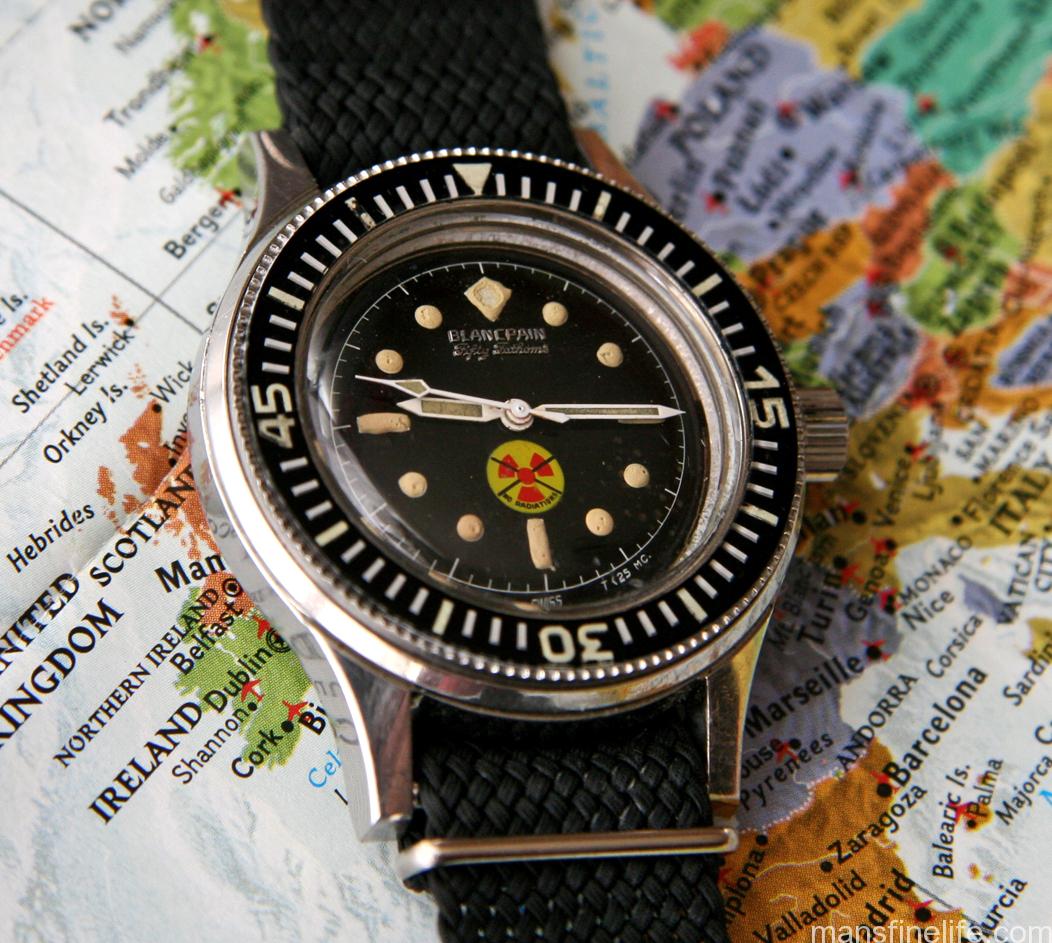
The case of the “No Rads” Fifty Fathoms in a nicely sized 40mm across without the crown by around 50mm lug-to-lug. It has an all-steel three-piece screwed construction, more polished than a MilSpec but sharing the long sweeping lugs with squared off edges. It has a rotating bezel that features a handsome acrylic inlay with fully articulated 60-minute elapsed time calibration for the diver (not unlike the later Rolex MilSub full-60 metal inserts). The bezel inlay is reverse printed and the numerals and hash marks are luminous filled. They will usually still glow today when charged with light, as will the dial, although the acrylic often shows some damage from the years. As was common in this era, the bezel is of the bi-directional friction variety and not locking or unidirectional, and it rotates with the application of firm finger pressure in either direction. The crystal is domed acrylic and sits essential flush with the top of the bezel.
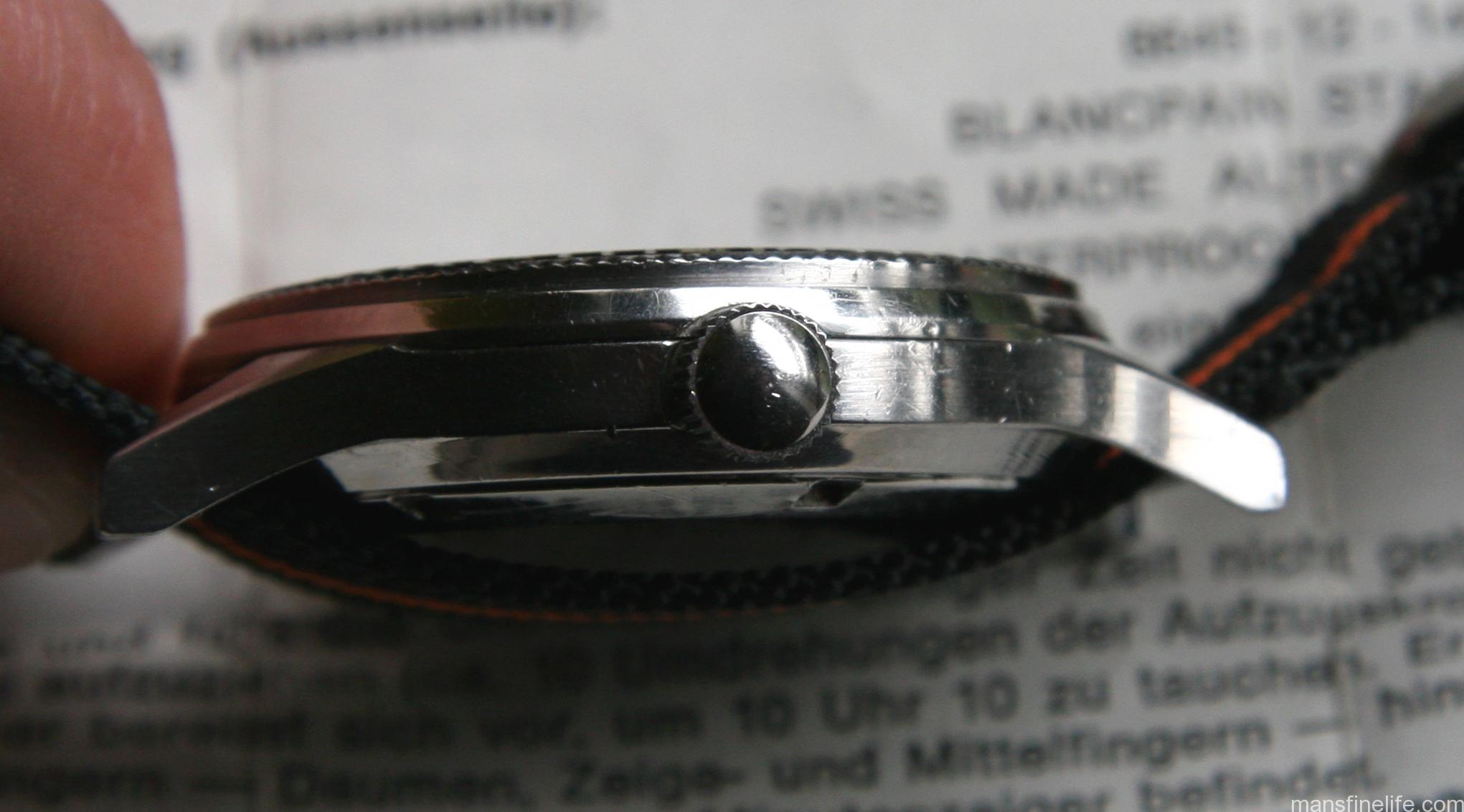
The crown is always unsigned and screw down. The exterior of the screwed back has the all-important Bund nomenclature with the 12-digit NATO Stock Number present in large roto-enrgraved form (neither the BUNDESWEHR or the stock number is ever stamped on the BPFF “No Rads” — they are always engraved). The first four digits “6645” indicate Military Wristwatch, while “12” indicates West German issue. The 6-digit Blancpain case serial number is stamped below in smaller font along with Swiss Made. The inner caseback contains only the Stainless Steel stamp and is otherwise unmarked unless by a watchmaker at service.

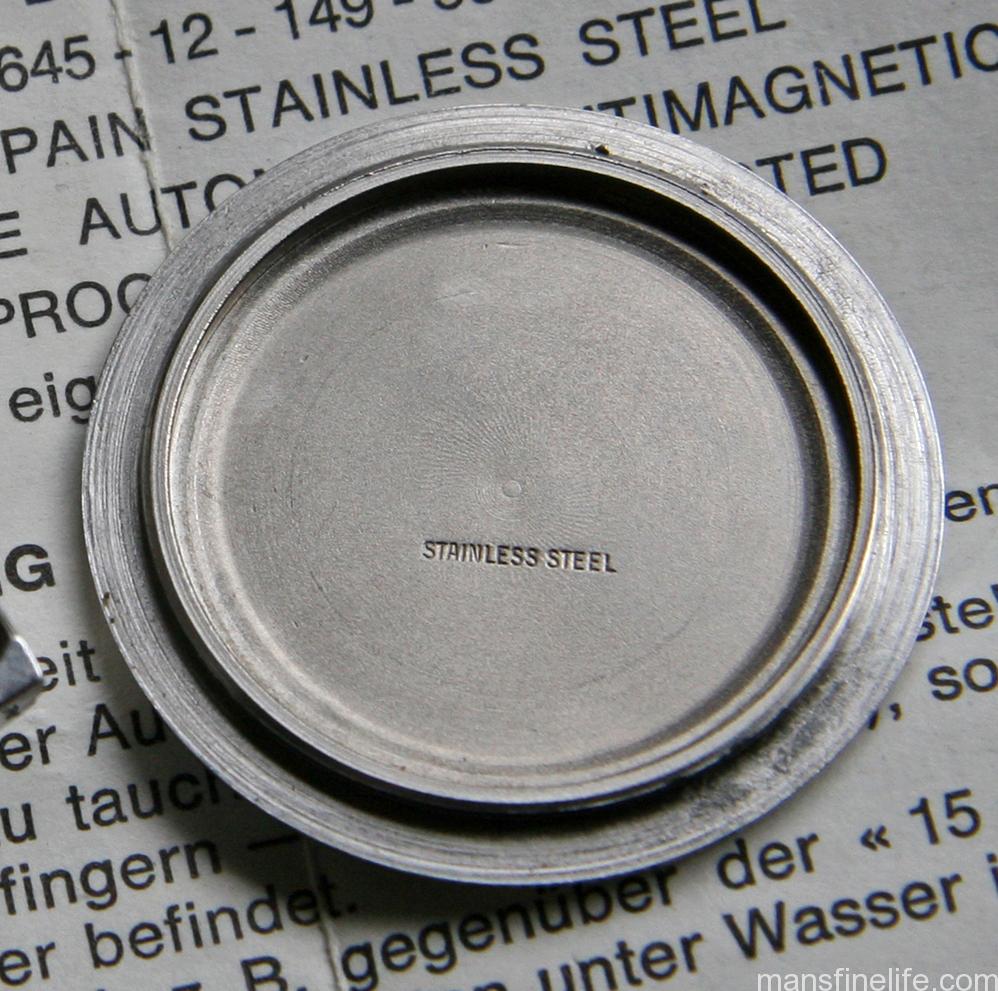
Under the hood is the A. Schild caliber 1700 non-hacking automatic movement. The ones I’ve owned both had 17 jewels though it is conceivable that you could run across a version with a higher jewel count, as the A.S. 1700 was definitely made in more highly jeweled variations. However, it’s pretty standard for military style watches to have lower count movements so I’d say 17 jewels is the safer bet for an issued watch. The A.S. 1700 is a homely but rugged movement, durable, reasonably accurate and easy to service. Because reliable and reasonably priced Schild movements had served Blancpain-Reyville so well from the beginning of their grand Fifty Fathoms adventure, no doubt they felt no need to change horses at this time (they would move to ETA in the 70s).
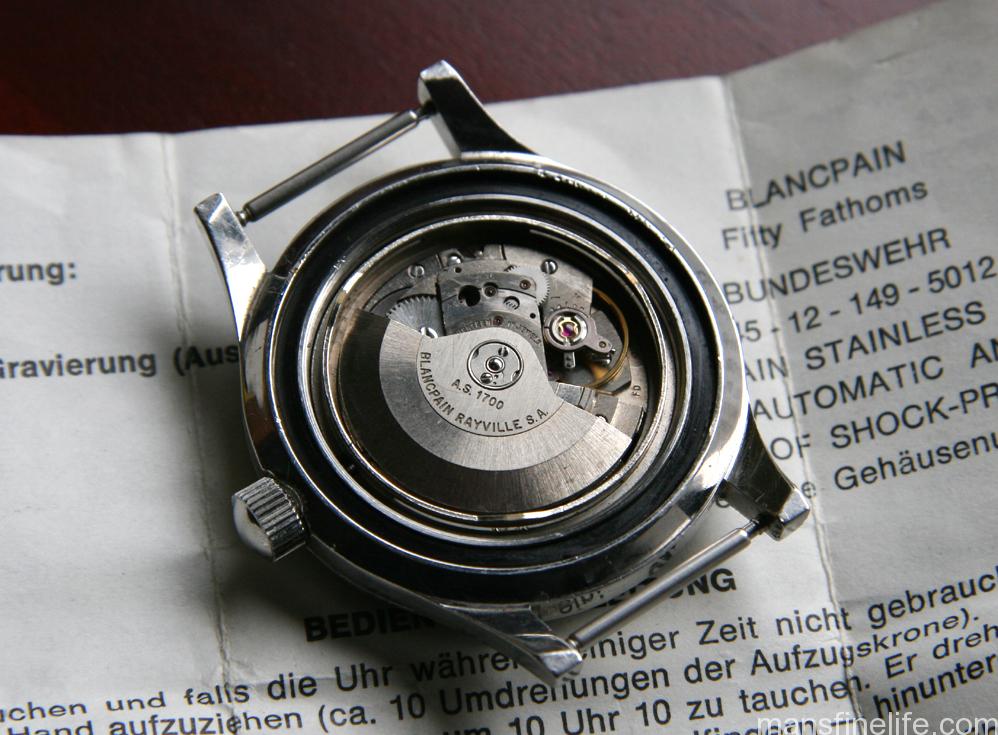
Unlike the preceding Milspec and TR 900, the “No Radiations” version of the Fifty Fathoms features standard removable springbars, not fixed. This is likely due to Blaincpain trying to sell the watch to civilian sportsmen as well as to armed services and indeed you can find non-military “No Rads” BPFFs every now and then (sort of like you can find the occasional civilian IWC Mark XI). The original strap for the Bund was a one-piece woven perlon NATO-style with a rinky little steel buckle. If you’re very fortunate, you can find a Fifty Fathoms “No Radiations” Bund with original box and paperwork and here are some pictures of them for your reference.

As you can see, the accessories are nothing fancy but they are definitely exciting for any military watch collector. The complete package would be the blue Blancpain coffin-style box; the original factory guarantee in German and with printed NATO Stock Number, which will often not be filled out but sometimes has the case serial number written in; and if you’re lucky, the package will also come with the decommission/resale paper from the VEBEG GmbH, essentially the state-run military surplus disposal corporation for the German Armed Forces.
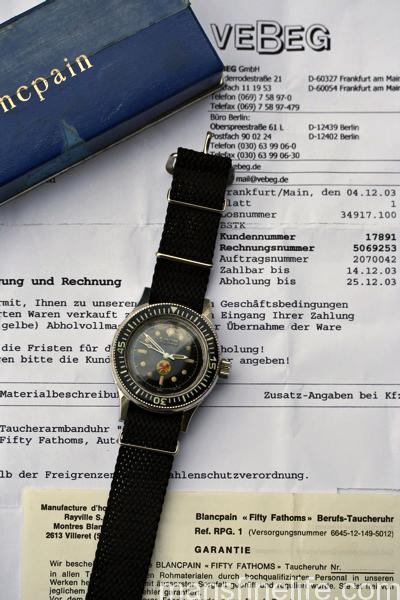
Despite the fact that the two BPFF “No Rads” I owned were only a couple of hundred serial numbers apart they had slightly different dials. The first one I owned with the slightly earlier serial number had a glossy-type dial, while the second one with the later SN had a matte-style dial. Both, however, had the Blacpain & Fifty Fathoms signatures in embossed white metal proud of the dial surface. And both had white-printed connected minute tracks. The two also shared the characteristic diamond shaped “12” marker and the more Submariner-like bar & dot markers for the rest of the figures. The handsets on both were identical: simple white-painted metal luminous-filled sword & dagger hour and minute hands and a rather Speedmaster-like fantail sweep seconds with luminous arrow tip.
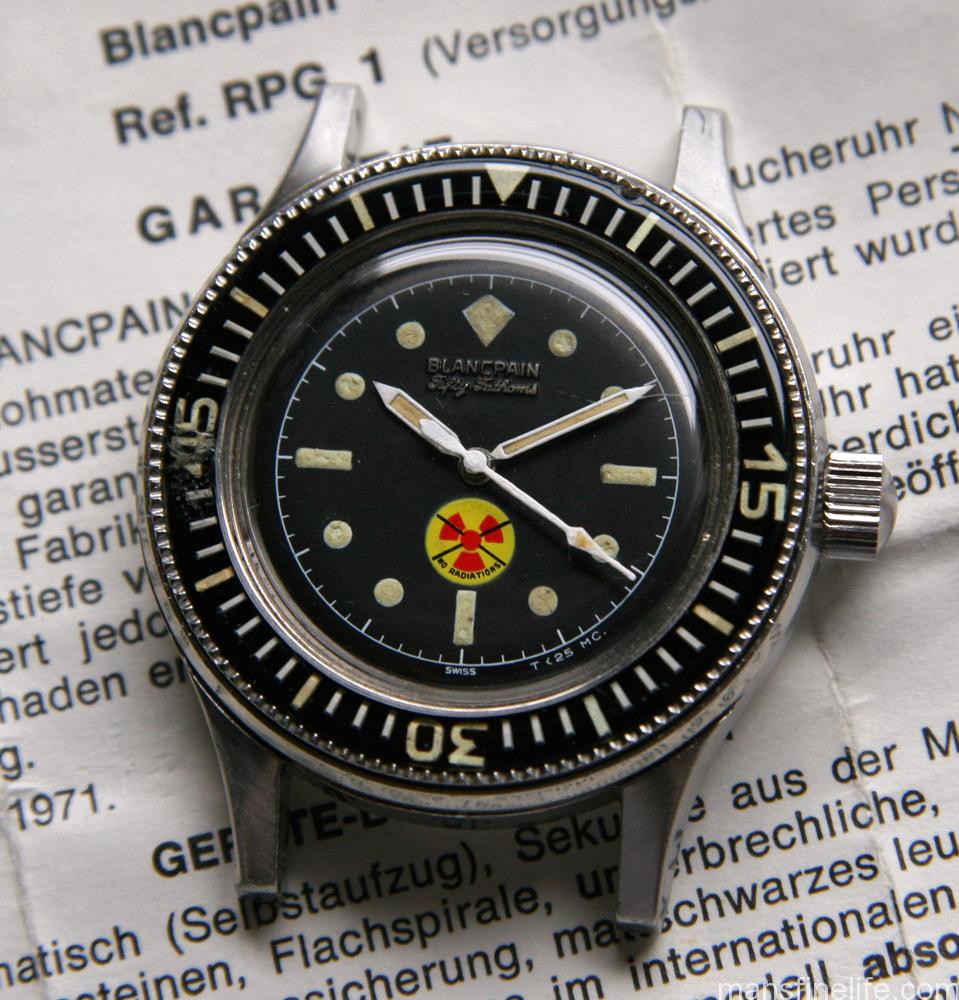
A final thought and this is just my personal opinion: I would not confidently buy a Bund-issued BPFF “No Rads” that had a date, was marked “Aqua Lung”, had a different case, bezel insert, was smaller than 40mm, had radically different hands or BUND/NATO issue markings that were stamped rather than engraved or printed in a manner other than what I’ve owned and shown here. There were a ton of NOS vintage Blancpain dials, movements and cases floating around out there for a long time and when this model started to catch on as a collectible about 10-15 years ago a lot of Frankens began popping up. So Bund-issued BPFF “No Rads” from the 1960s may well exist in a different spec than the two examples I’ve shown here but I still wouldn’t buy one without further hardcore evidence that those other “No Rads” models were actually issued to the Bundeswehr and not some put-together masquerading as the real thing. Call me conservative but when you’re hunting what in my opinion is one of the great issued military watches of the post-World War II era why take a chances on a questionable version? The Blancpain Fifty Fathoms “No Radiations” Bundeswehr deserves — and is expensive enough — to be bought, enjoyed, collected and worn as a no-issues, no worries watch. And I hope I’ve helped to at least show what characteristics a proper example should have when you’re ready to dive in and lay down your hard earned money for one.
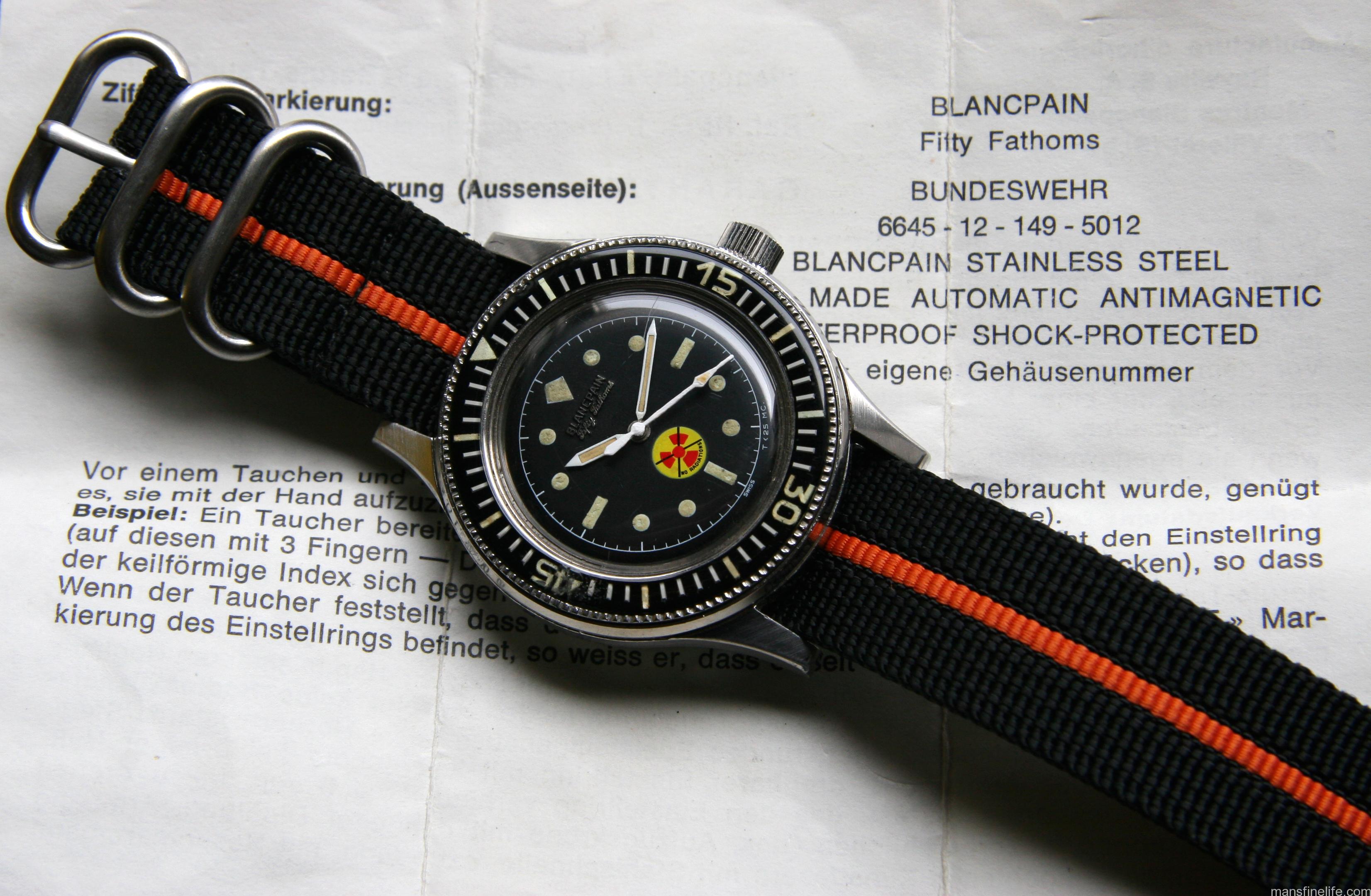
Special thanks to Richard Grimmel and Dr. Strong for sharing their invaluable knowledge with me way back when. If there are mistakes in this article they are mine alone.

